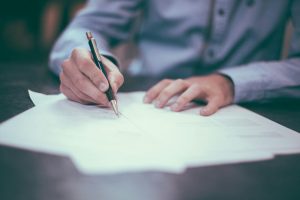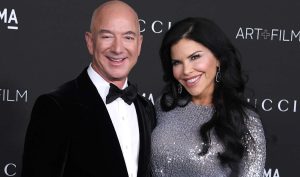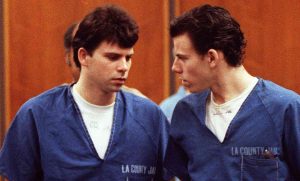We speak to Lisa Mueller, an expert in protecting unique small molecules, biologics and DNA and protein sequences that are critical to the pharmaceutical and biotechnology industries. With new medical inventions rapidly occurring and science being as inventive as ever, Lisa provides excellent insight into how IP affects the pharma and biotech industries, where her clients go wrong and how the U.S. compares with the rest of the IP world.
As a partner in Michael Best and Friedrich’s Intellectual Property Group who has extensive experience in the biotechnology and pharmaceutical sectors, can you provide an overview of how a biotechnology/pharmaceutical company would protect its IP in relation to a new product/invention?
Generally, companies in the biotechnology and pharmaceutical sectors protect their intellectual property (IP) using the patent systems available globally. Typically, companies in the pharmaceutical and biotechnology industries file patents protecting small molecules, biologics (an antibody, peptide sequence, etc), methods of treatment or unique (diagnostic) assays (for detecting and/or treating disease). In fact, the pharmaceutical industry uses the patent system quite extensively to protect its products (both small molecule and biologics) given their fairly long development time and entry to the marketplace (since these products require regulatory approval before they can be marketed).
Additionally, we also see companies protecting their intellectual property through the use of trade secrets. Trade secret protection is often important to protect unique aspects of the manufacturing process (such as cell media and culturing techniques, unique manufacturing methods, purifying proteins, unique methods of formulating a product, etc.). Really anything can be a trade secret as long as it gives a company a competitive advantage in the market place and it is subject to reasonable efforts to keep it secret.
Finally, we see companies protecting their intellectual property through the use of trademarks, such as coming up with unique brand or product name, logo and/or catch phrase to help identify and distinguish their product from other similar types of products in the marketplace.
What are common cases that you deal with?
Over 90% of what I do is global patent and product development strategy in the pharmaceutical, biotech, diagnostic and agricultural space. Most of my cases involve new small molecules, biologics, proteins or agricultural products. Where I add value for my clients is determining the strategy for getting them the best and broadest patent protection that not only protects their products but is broad enough to block others from copying their products as well as while helping them navigate and avoid any intellectual property that might be owned by any third parties.
Is there anything in particular your clients can do in order to make that process a little easier? Is there anything they tend to dismiss or not be as knowledgeable about?
I want to be a trusted adviser and an integral part of my client’s team. As such, I consider it my responsibility to endeavour to do everything on my part to learn all that I can about each of my clients and their respective industries. As their partner, my job is made significantly easier when clients include me in their product development and intellectual property protection process as early as possible. The earlier I am involved in such a process and the more information I know about the invention and potential product, the better advice I will be able to provide not only from a patent protection but also from a due diligence perspective. Also, having the inventors, who are often the most knowledgeable when it comes to the state of the prior art. provide as much information on who or what is the closest prior art is incredibly helpful.
However, sometimes this just is not realistic and inevitably things happen so we may not have as much lead time as we would like. In these circumstances, my job is made easier when clients provide as much information as possible about a potential invention or product and the prior art to allow me to prepare a global patent strategy as quickly as possible.
You mentioned you have to keep up-to-date globally; how do you keep on top of new legislations to ensure that your knowledge is at its best for your clients?
I subscribe to about 25 different blogs and new services from around the world and each day I spent time reading something from at least 5 of them. Additionally, I have relationship with law firms around the world and many of them will send me e-mail updates as soon as there is a new law or significant case that they believe I would be interested in or might affect my clients. In addition, I am the author of the BRIC Wall blog (https://bricwallblog.com/) which provides case law and law changes in the BRIC and emerging countries around the world. There is always quite a bit of change going, so I make sure to carve out time each day to make sure I am up-to-date on the latest changes going on globally.
How do you think the US stands in comparison to other countries around the world in relation to legislative developments in this area?
In my opinion, I believe that the U.S. Patent Office has done a good job. It has been very transparent in terms of its initiatives (such as improving patent quality) and has been keeping the public up-to-date regarding these changes. I think when you start looking at other regulatory agencies, such as the U.S. Food and Drug Administration (FDA), they have not been quite as timely – such as, for example with issuing certain guidances, particularly with respect to biosimilars, for example. In fact, we are still waiting for guidance from the FDA on the interchangeability of biosimilars. Originally, FDA had said a guidance would be published by the end of 2016, but now it is looking like the end of 2017. In terms of legislative developments, because this year was an election year, not much happened in terms of legislative developments for the pharmaceutical and biotechnology industries. It will be interesting to see what legislative developments occur during the next four years of the Trump administration and how they will affect the life science industry.
Can you give me any examples to what you think could be done?
As mentioned previously, we are still waiting for the draft guidance from FDA regarding the interchangeability of biosimilars. In addition, continuing on the theme of biosimilars, there is need for legislative clarity with respect to the patent litigation provisions under the Biologics Price and Innovation Act of 2009 (BPCIA) also referred to as the “patent dance”. As we have seen thus far in the biosimilar litigation that have taken place to date, there are questions about when certain notice provisions are required and also whether or not “dancing” is even required. I think legislative clarity would give both innovator and biosimilar companies more certainty and would save both sides money that could be invested in additional research to help save lives.
Finally, I think legislation to provide clarity in terms of what constitutes patent eligible subject matter, particularly for the diagnostic industry would be very helpful. The U.S. Supreme Court’s decision in 2012 in Mayo Collaborative Services v. Prometheus Laboratories, Inc., drastically changed the landscape for the patenting of diagnostic inventions in the U.S. The U.S. Patent Office and courts continue to struggle with finding the appropriate balance when applying and interpreting this decision.
What are the remedies available if these companies believe their IP has been breached?
In the U.S., there is a possibility of a temporary and/or permanent junction, although both can be rather difficult to get, but not impossible. Most typically, courts will award damages in the form of a reasonable royalty. Occasionally, lost profits will be awarded.
You were honoured as a 2016 Women of Influence by the Chicago Business Journal – can you tell us more about the recognition and what it means to you?
It was truly a humbling experience and I was extremely honoured to be selected with such other outstanding women who are working so hard and in such creative ways to foster business environments to help create the next generation of successful women. For me, the recognition means giving back and helping young women become successful so that they too can pay it forward. A passion of mine is mentoring. I never had the privilege of having a mentor during my legal career and looking back, I see where I really could have benefited from one. I spend a lot of time mentoring within Michael Best, the Cherie Blair Foundation for Women and the Best Your Own Best Blog (https://beyourownbest.com/)
What are the challenges when deciphering if an invention is truly unique or not?
Technology is advancing so quickly that it can be very challenging to decipher whether or not an invention is truly unique. One of the biggest challenges in making such an assessment involves determining whether or not you have identified all the relevant prior art to allow for a complete analysis of whether an invention is patentable as well as whether there is freedom-to-operate. As a result, it is important to have as much time to allow for a through patentability and freedom-to-operate analysis to be completed as possible. Many times, determining whether an invention is unique involves taking the results of a global patent search and sitting down face-to-face with the inventors and going through all the prior art individually in painstaking detail to find the distinctions between the invention and what is already known. While time consuming and labour intensive, many times I find that this is where we can really elucidate the patentable features of an invention and develop a story of why an invention is truly unique.




















